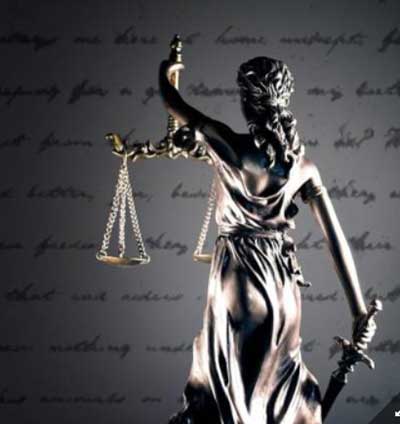Relevance: GS-3: Money-Laundering and its prevention;
Key Phrases: Vijay Madanlal Choudhary & Ors Vs Union of India; ED; PMLA 2002; Vienna Convention on Money Laundering; Tofan Singh Vs State of Tamil Nadu; Youth Bar Association Vs Union of India; Indian Evidence Act 1872; Civil Procedure Code 1908.
Context:
- The Supreme Court is looking into allegations of rampant and unjust
application of the PML Act.
- It is also hearing a batch of petitions in Vijay Madanlal Choudhary & Ors Vs Union of India about the constitutionality of PMLA.
Key Highlights
- Prevention of Money Laundering Act, 2002 (PMLA)
- It is the principal law for regulation, prevention and penalisation of money laundering in India.
- It’s origin lies in International efforts undertaken to flag and prevent the threats of money laundering which had links from global drug trafficking and terrorism.
Vienna Convention on Money Laundering
- It was organised in 1988.
- It was one of the 1st steps for global cooperation to prepare groundwork regarding criminalising ML and proceeds from drug trafficking.
- It had provisions for easier extradition in case of ML and of negating domestic bank secrecy provisions to support international criminal investigation.
Aims and Benefits of PMLA
- To obviate threats of money laundering.
- The 1999 Bill has witnessed multiple amendments which have broadened the scope of applicability and powers of the authorities concerned.
- Targets the proceeds of crime and empowers authorities to confiscate the
same.
- Confiscation of proceeds of crime ensures breaking of links in organised criminal activities.
- Targets the criminals higher up in the hierarchy.
- In highly organised crime syndicates, the upper management is only involved in exchange of the proceeds of crime.
- Only the ‘paper trail’ comes to the aid of investigating agencies in catching hold of the criminals.
- To ensure that white-collar criminal activities do not disbalance the
socio-economic stability of a developing country like India.
- Timely intervention of the authorities led to the attachment of assets worth ₹19K crore out of a total fraud committed of ₹22K crore in the cases involving Vijay Mallya, Nirav Modi and Mehul Choksi.
- Of the attached assets, ₹15K crore have already been returned to public sector banks by the ED.
Legal Challenges for PMLA
- Profound fear of arbitrariness
- The freedom to attach properties, even in ordinary cases, could easily be mis-utilised.
- This has led the PMLA to attract many legal challenges and constitutional tests.
- Call for transparency
- ECIR (Enforcement Case Information Report) is treated as an internal document.
- This is against the norm in criminal jurisprudence. Investigations and proceedings with severe implications on the accused should be transparent as per the fundamental freedoms granted by the Constitution.
- Rights of the Accused
- Youth Bar Association Vs Union of India: The Supreme Court mandated an accused person to be entitled to a copy of an FIR. The same was to be published on the website with exception in cases of sexual offences and terrorism.
- There have been cases where a copy of the ECIR was not provided to the accused on grounds that it is an “internal document”.
- Procedural safeguards are transgressed
- Many procedural safeguards under the Code of Criminal Procedure, 1973 (CrPC), such as those under Sections 41A and 161 are not afforded to an accused under the PMLA.
- Flouting of norms
- Tofan Singh Vs State of Tamil Nadu: SC held that investigating officers under special statutes shall be deemed in law to be police officers.
- PMLA has empowered officials with the powers of a civil court under the Civil Procedure Code, 1908, as such ED investigations and proceedings would be deemed to be judicial proceedings and statements made to ED being admissible as evidence.
- This aspect was flagged in several decisions as violative of the rights of the accused, however, the courts have opined otherwise.
Other Challenges
- Abysmally few convictions
- Critics also point to the abysmally low number of convictions
made against raids conducted by the ED.
- Between 2011 and 2020, the ED conducted over 1,700 raids with only 9 convictions.
- However, to give a complete picture, the number of cases being
investigated by the ED is much less when compared with other
jurisdictions.
- Despite an increase in number of cases being investigated every financial year to 981 (in 2020-2021), it is low in comparison to other jurisdictions, with the figures being 7,900 in the UK, 1,532 in the USA, 4,691 in China, 1,036 in Australia, 1,823 in Hongkong.
- Critics also point to the abysmally low number of convictions
made against raids conducted by the ED.
- Sophisticated means of fraud
- ML has become more frequent and sophisticated with the advent of internet-based banking and means of masked online payments.
- This has highlighted the importance of proactively taking adequate preventive measures.
- However, the authorities must be mindful of the constitutional freedoms and rights afforded to all persons, including the accused.
Conclusion
- The law needs rethinking to suit the current needs.
- There is a need to set out proper procedures and standards that the concerned authorities and the investigating agencies may not derogate.
- Performing such a balancing act would ensure that the PMLA aligns with its objectives.
Source: The Hindu BL
Mains Question
Q) What are the benefits of enacting Prevention of Money Laundering Act, 2002 (PMLA)? Also highlight the challenges of this act and suggest a suitable way forward.








